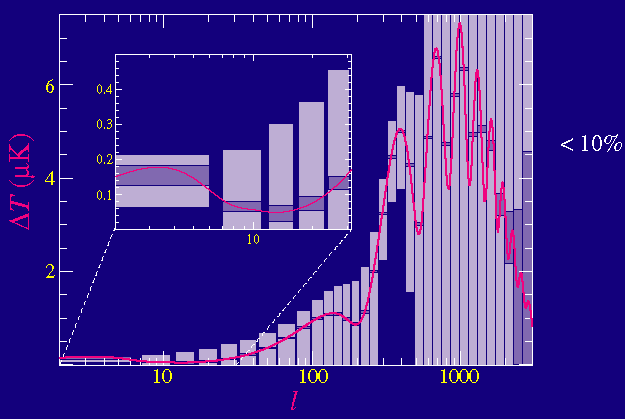
The power spectrum of the polarization associated with the initial density perturbations shows several characteristics:

It peaks near the diffusion scale (l~1000) at a level that represents <10% polarization of the anisotropies and hence a several micro Kelvin signal. It has a second peak on large angular scales representing the same Thomson scattering process but arising from recent times when the hydrogen in the Universe was ionized by the first stars in the Universe. This signature is on large angles since the photons diffuse across the whole visible Universe today. It is at the tenth of a micro Kelvin level since the probability of a CMB photon scattering in recent times is a the percent level and below.
Finally, the polarization power also exhibits acoustic oscillations since the quadrupole anisotropies that generate it are themselves formed from the acoustic motion of the fluid. The peaks track the acoustic velocity and are out of phase with the temperature peaks. These polarization and the temperature are consequently partially correlated.